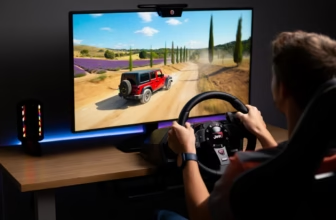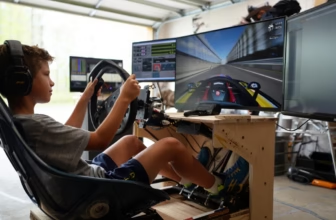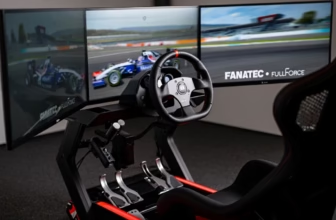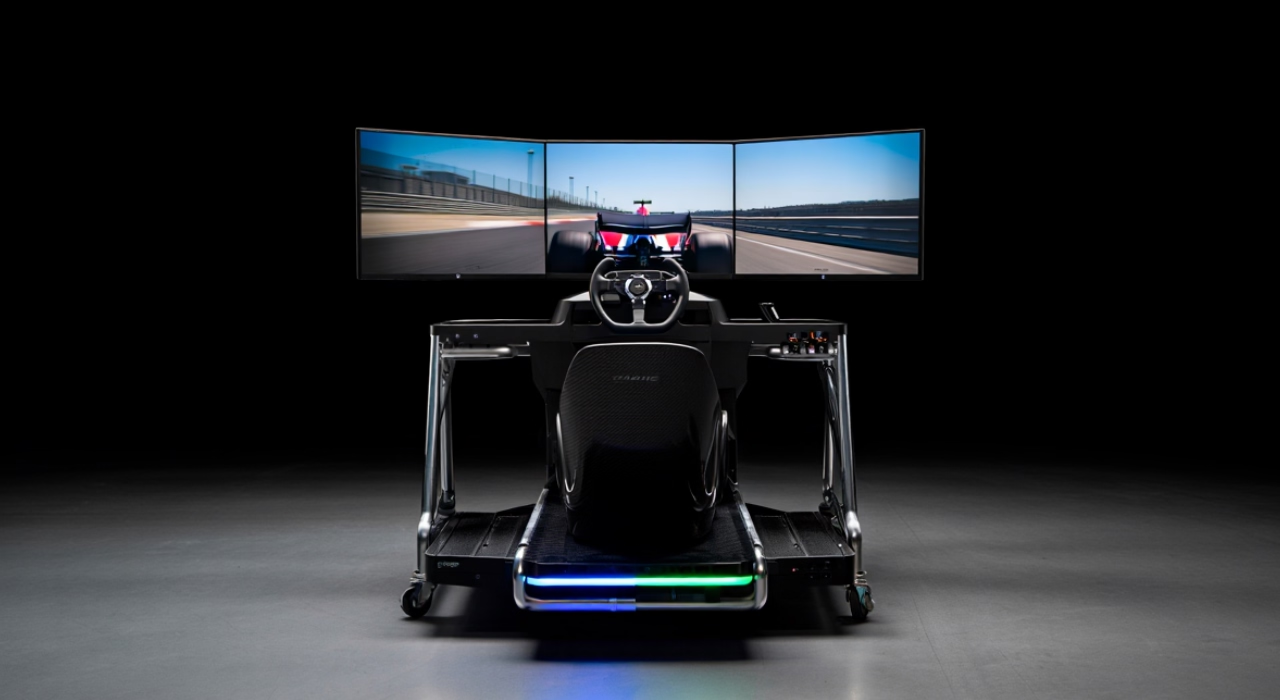
The virtual racing revolution has transformed from a niche hobby into a global phenomenon that’s reshaping the entire motorsport landscape. With the racing simulator market exploding from $500 million in 2024 to a projected $3 billion by 2030, sim racing has become the driving force behind unprecedented technological innovation and a complete transformation of the sports ecosystem.
The rise of a digital motorsport empire
The global sim racing market has witnessed extraordinary growth, with projections showing it will reach even greater heights in the next decade. This meteoric rise reflects not just market expansion but a fundamental shift in how we perceive and engage with motorsport.
Discover more about the sim racing revolution at sim-racing.net, your gateway to the future of virtual motorsport.
Professional racing teams have embraced this revolution wholeheartedly. Formula 1 teams like Mercedes-AMG Petronas and Red Bull Racing now utilize custom-built VR systems that integrate real telemetry data, while Max Verstappen and other top drivers use simulators extensively for training and race preparation.
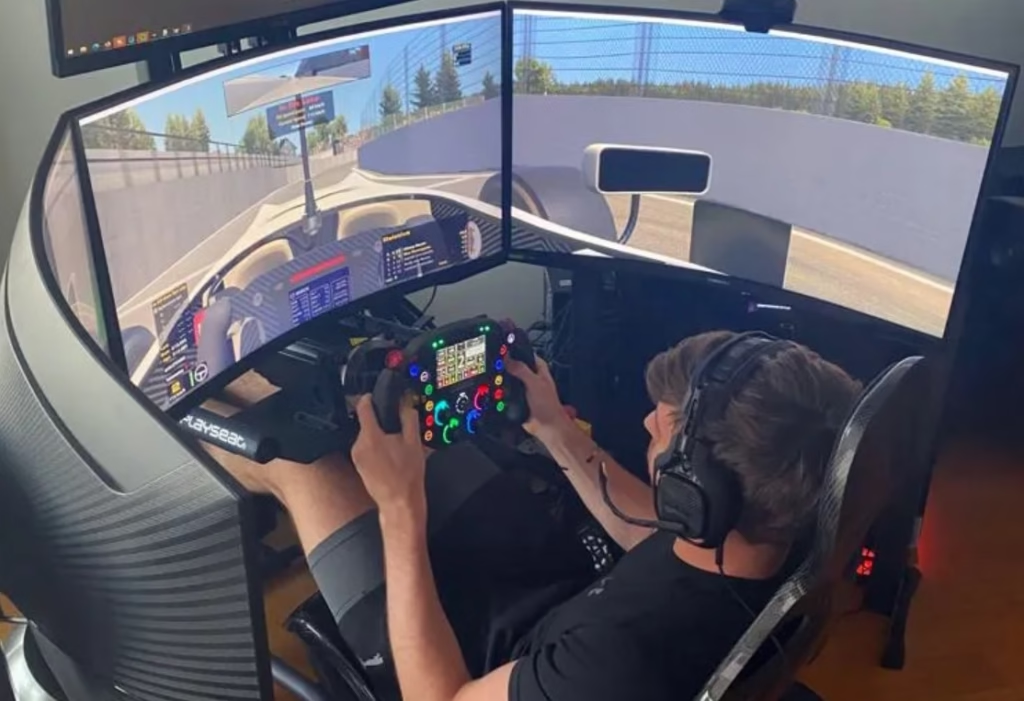
The explosion of prize pools in sim racing competitions demonstrates the legitimacy and commercial viability of virtual competition.
Revolutionary technologies transforming the experience
Artificial intelligence and advanced physics
AI integration is revolutionizing sim racing with sophisticated algorithms that create adaptive opponents and analyze race performance in real-time. Modern AI systems can process telemetry data at high frequencies, enabling teams to make split-second strategic decisions during races. These systems are rapidly bridging the gap between virtual and real-world racing experiences.
Haptic feedback and motion platforms
The evolution of haptic technology has reached unprecedented levels of sophistication. Companies now deliver precise tactile feedback that allows drivers to feel tire slip, track irregularities, and vehicle dynamics with remarkable accuracy. Motion platforms feature advanced actuator systems with multiple degrees of freedom, creating an immersive experience that closely replicates real-world G-forces and vehicle behavior.
Virtual reality and enhanced immersion
VR technology has become a cornerstone of modern sim racing, with systems now offering ultra-high resolutions and comprehensive 360-degree environments. These advances allow drivers to experience tracks with the same level of detail they would encounter in real racing, including precise elevation changes, corner apexes, and braking zones.
Reshaping professional driver development
The traditional pathway to professional racing is being revolutionized by sim racing technology. Programs like various virtual-to-reality competitions have demonstrated how virtual racing can serve as a legitimate launching pad for real-world careers. Winners progress through intensive training programs and compete in international racing events, with many achieving success on major stages.
Career pathways now include multiple routes:
- Direct progression from sim racing to professional teams through dedicated scouting programs.
- Simulator driver roles with motorsport teams, where virtual specialists contribute to car development and race strategy.
- Esports-specific careers in leagues with substantial prize pools.
The transferable skills are proving remarkably valuable. Professional coaching services now use data-driven approaches with full telemetry analysis and live coaching to develop real-world racing competencies.
Economic impact and market transformation
Hardware innovation boom
The sim racing hardware market is experiencing explosive growth, with the European market alone expected to reach substantial values in the coming years. Key innovations include:
- Force feedback systems with unprecedented precision and power.
- Direct drive technology offering extremely high torque outputs.
- Professional-grade motion platforms spanning entry-level rigs to full-scale systems.
Esports prize pools and professional opportunities
The financial opportunities in sim racing have reached impressive levels. Major esports competitions now offer record-breaking prize pools, while sim racing competitions have awarded millions across multiple events. These prize pools rival traditional sports competitions and provide legitimate career opportunities for talented virtual racers.
Mainstream adoption and cultural shift
Major automotive manufacturers are heavily investing in sim racing ecosystems. Automotive giants now explore augmented reality systems that allow virtual and real racers to compete simultaneously, while others use advanced simulators for both driver training and fan engagement. This manufacturer involvement legitimizes sim racing as a crucial component of modern motorsport strategy.
The COVID-19 pandemic accelerated mainstream adoption dramatically. Virtual racing events attracted world-class audiences and broke television records, introducing countless new viewers to the sport. This surge demonstrated sim racing’s ability to maintain fan engagement during challenging times and established it as a permanent fixture in the motorsport calendar.
Building tomorrow’s sports ecosystem
Professional training integration
Professional racing schools now incorporate sim racing as a fundamental training component. Advanced facilities offer comprehensive programs covering everything from basic racecraft to telemetry analysis, demonstrating sim racing’s evolution from entertainment to essential professional development tool.
Technological convergence
The boundaries between virtual and real racing continue to blur. High-fidelity simulators used by professional teams now cost millions of dollars and provide training environments so realistic that top drivers use them for both physical and mental race preparation. The physics engines in modern simulators offer accuracy levels that translate directly to real-world performance improvements.
Global accessibility and democratization
Sim racing has fundamentally democratized access to motorsport. Unlike traditional racing careers that require substantial financial backing, talented individuals can now compete globally with relatively modest investments. A competitive setup can be assembled for under $5,000, making high-level competition accessible to a much broader population.
The future landscape
As we look toward the future, sim racing is positioned to become an integral part of the broader sports ecosystem. The technology driving this revolution continues to advance rapidly, with developments in AI, haptic feedback, and immersive technologies pushing the boundaries of what’s possible in virtual competition.
The professional opportunities continue to expand, from traditional racing careers to specialized roles in esports organizations, content creation, and technology development. With major investments from automotive manufacturers, technology companies, and traditional sports organizations, the sim racing ecosystem is building the infrastructure necessary for sustained long-term growth.
For enthusiasts looking to join this revolution, numerous pathways exist—from top rigs for every budget and skill level to the 10 best gaming PCs for Sim Racing and the 10 best steering wheels for PlayStation 5. These technological foundations, combined with the growing ecosystem of training programs and competitive opportunities, make this an exciting time to enter the world of sim racing.
The journey from $0.5 billion to $3 billion represents more than market growth—it signifies the birth of a new sporting paradigm where technology, accessibility, and pure competitive spirit converge to create opportunities that were unimaginable just a decade ago.
As sim racing continues its rapid evolution, it’s not just changing the game—it’s creating an entirely new playing field for tomorrow’s motorsport champions.


